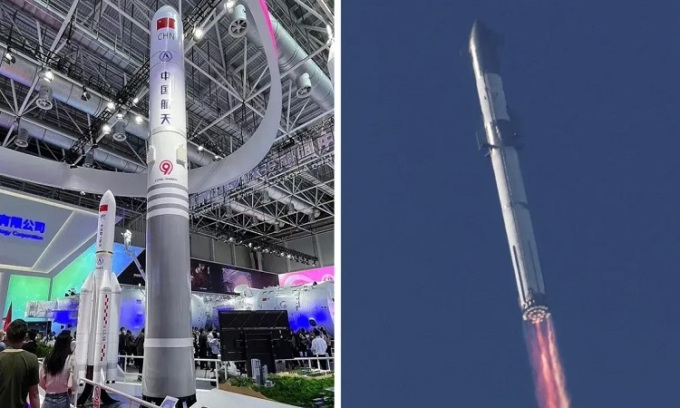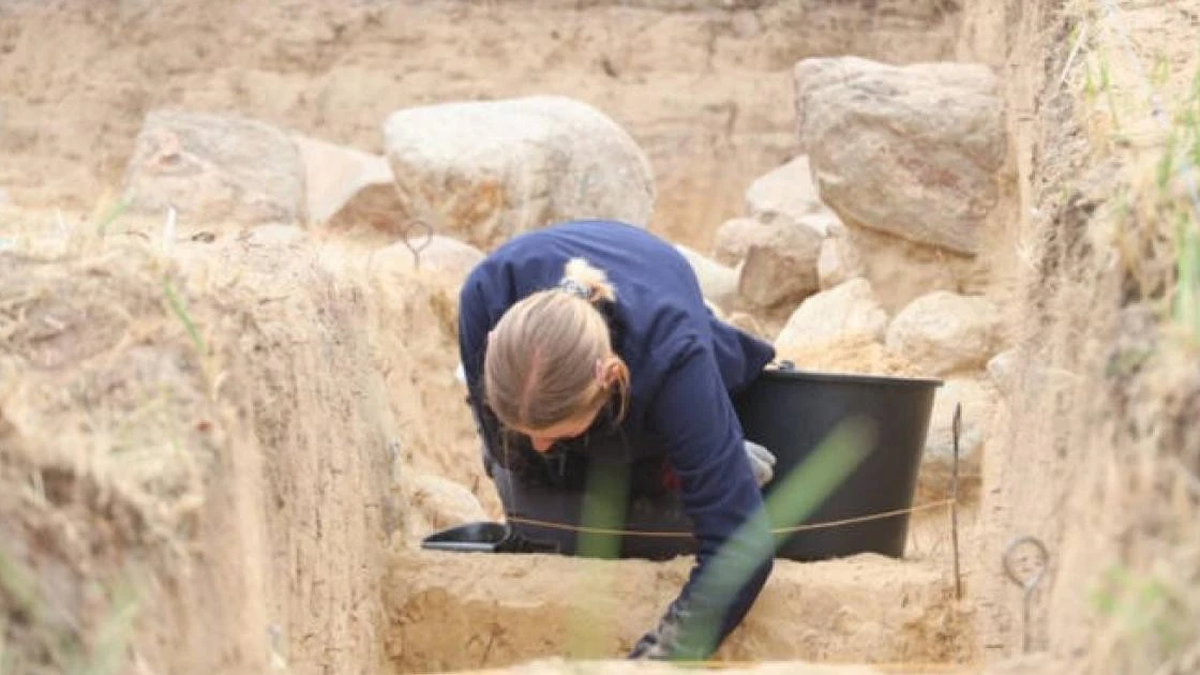Compared to the Long March 9 rocket, SpaceX's Starship launch system generates more thrust thanks to the new generation Raptor engine.

Model of the Long March 9 rocket (left) and the Starship launch system (right) during the first launch test. Photo: Interesting Engineering
China recently announced a change in plans for its next-generation Long March 9 rocket. The super-heavy rocket used to launch deep space missions will no longer be disposable. Instead, like SpaceX’s Starship launch system, it will be fully reusable, reducing the cost of successive missions.
The announcement of China’s Long March 9 rocket was somewhat overshadowed by the successful, albeit explosive, first launch of SpaceX’s Starship rocket. The announcement came at the end of April during China’s National Space Day in Hefei, Anhui Province, just days after Starship took off on its first flight test on April 20.
The Long March 9 rocket is being developed by the China Academy of Launch Vehicle Technology (CALT). It will be a three-stage rocket powered by several full-cycle staged methane engines attached to the first stage. If all goes according to plan, CALT will also aim to build a two-stage version of the Long March 9 for low-Earth orbit (LEO) missions. It is a major shift from China's original plan to build a disposable Long March 9 rocket powered by a 500-ton kerosene-liquid oxygen engine. The rocket is expected to fly around 2028-2030. Currently, the Starship-like Long March 9 version needs several more years of development.
Obviously, both China and the world are closely watching the development of the fully reusable Starship launch system. In fact, CATL recently released a frame-by-frame video analysis of the launch. Earlier this year, the European Space Agency issued a report stressing that Europe needs to invest more in its space industry or it will fall behind.
The most important numbers when comparing Long March 9 and Starship are the development timeframes for each rocket system. The Starship launch may have been delayed a few times, but SpaceX is still leading the way and breaking new ground, bringing unprecedented capabilities to the space industry.
While SpaceX may have to wait a while before it gets approval from the Federal Aviation Administration (FAA) for a second test launch, the company is using a “failure is the mother of success” approach to rapidly improve the design. Starship will carry crews into space in the near future. While launch dates are constantly changing, Starship is slated for the dearMoon mission later this year, as well as a lunar landing on NASA’s Artemis 3 mission in 2025 or 2026.
Compared to Starship, China is targeting 2023 for the first flight of the Long March 9. However, the country will build several versions, and the first rocket model will only have a reusable first stage, which can carry 35 tons to lunar transfer orbit. According to SpaceNews, a fully reusable version of the Long March 9 will not fly until 2040. That version can carry 80 tons to LEO. In terms of payload, Starship is expected to carry 100-150 tons to LEO when fully operational in the near future.
The initial version of the Long March 9 will be 114 feet tall and produce 6,100 tons of thrust. Meanwhile, Starship will be 120 feet tall and produce 7,590 tons of thrust at liftoff. The Starship’s greater power comes in part from the next-generation Raptor engines. The first stage, called the Super Heavy, will use 33 Raptor engines to provide the massive thrust.
China’s decision to change the design of its Long March 9 rocket could delay plans to launch the International Lunar Research Space Station (ILRS) to compete with NASA’s Gateway project. China is also developing the Long March 10 rocket, which could make its first flight in 2017. If all goes according to plan with the Long March 10, China hopes to send astronauts to the lunar surface by 2030.
An Khang (According to Interesting Engineering )
Source link




















































![[Maritime News] More than 80% of global container shipping capacity is in the hands of MSC and major shipping alliances](https://vphoto.vietnam.vn/thumb/402x226/vietnam/resource/IMAGE/2025/7/16/6b4d586c984b4cbf8c5680352b9eaeb0)













































Comment (0)